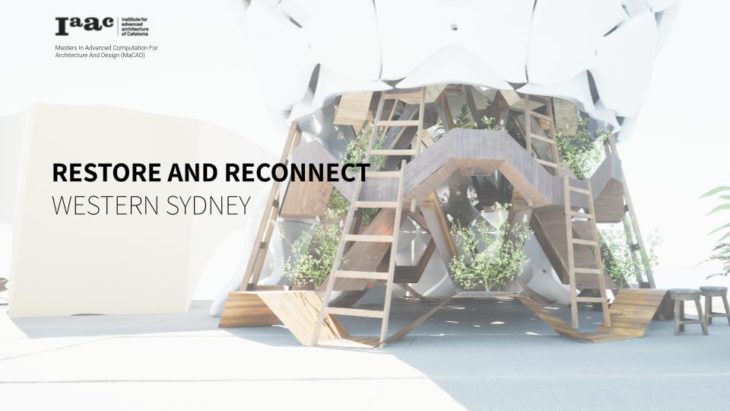


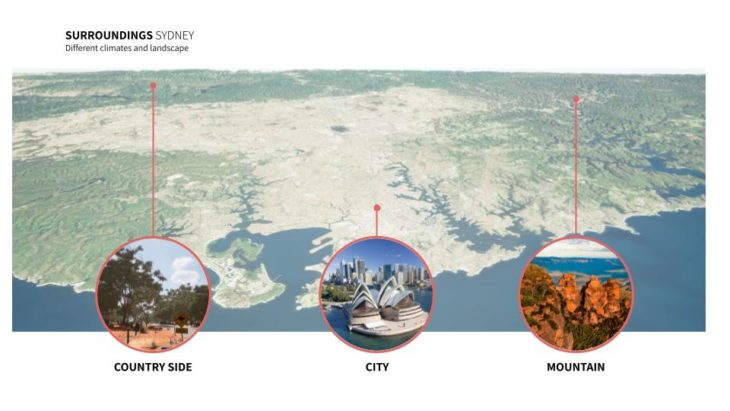
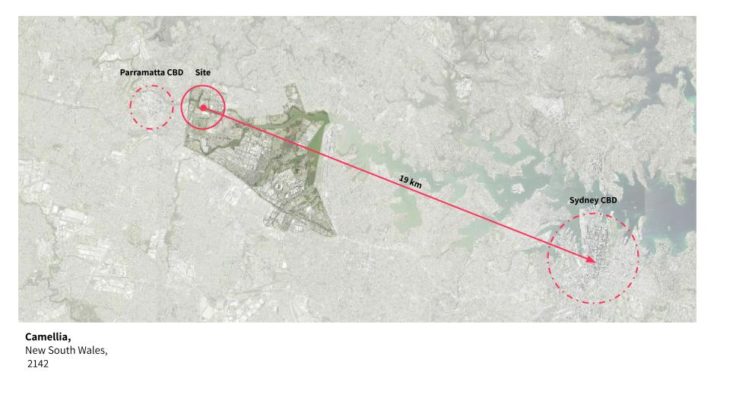

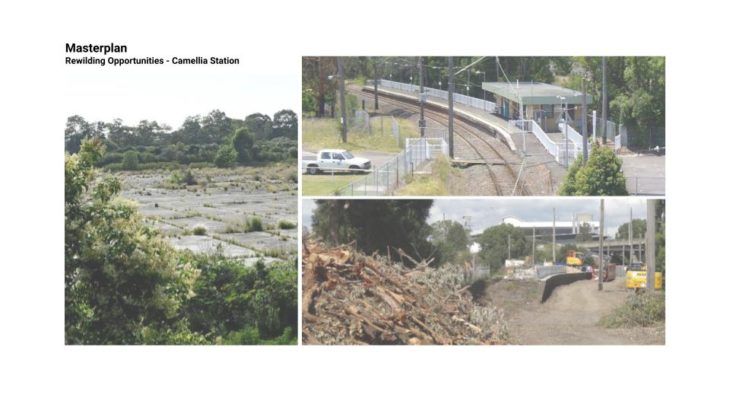
SITE
The site is located next to the Camellia Station, Western Sydney, Australia, which is a post-industrial site. Due to high ground contamination, the site is hardly to be developed and remains as a dead space in the city. However, it has great potential to connect few nodes in the areas and serve as a major interchange that can transform the context into a more vibrant and liveable area. This is also enforced by the construction of the Light rail that is passing the station.
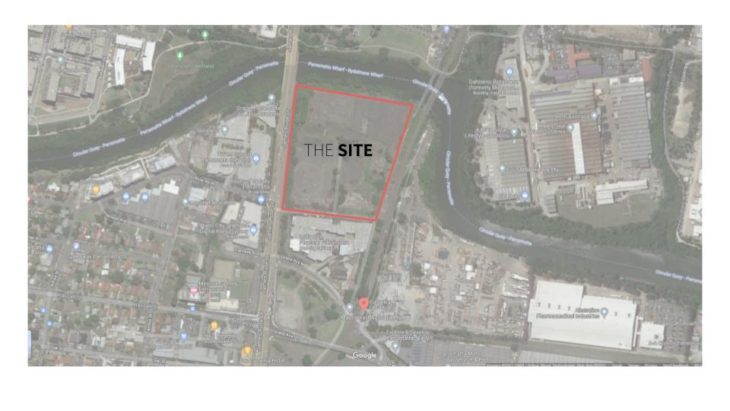
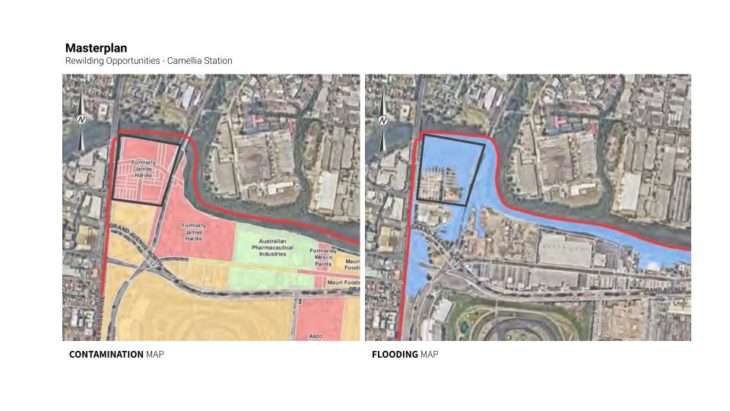


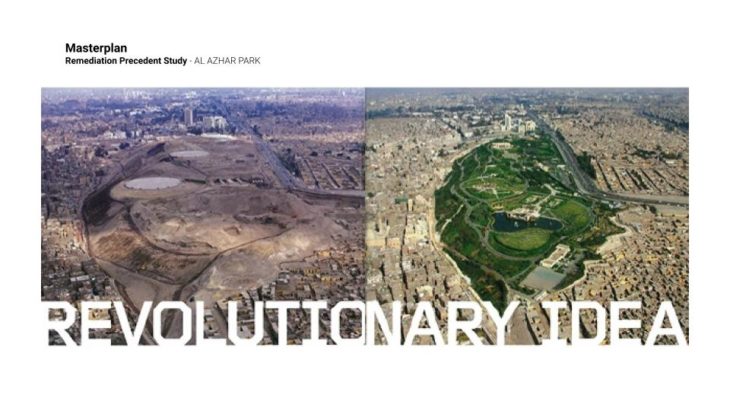
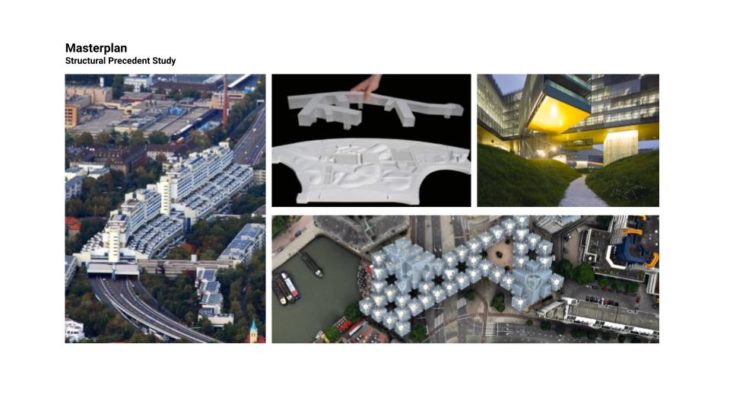

INITIAL LATTICE STUDY
This initial lattice study explores how lattice cells can grow uniformly or organically. The parameter includes growth radius and growth vector of each cell centroid. The final cell formation is generated using a 3D voronoi pattern. By changing growth radius and growth vector, few iterations can be generated.
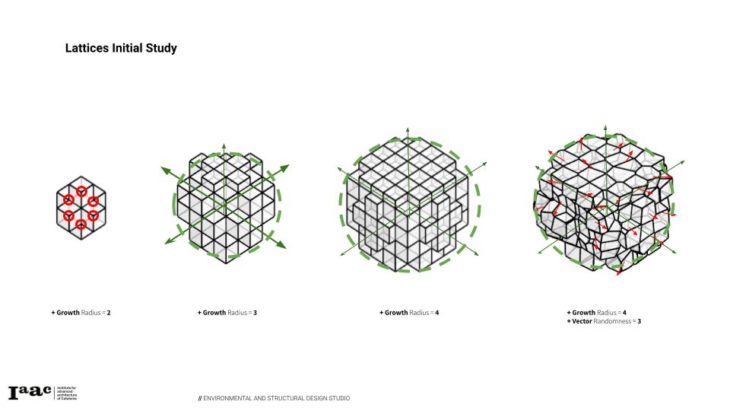
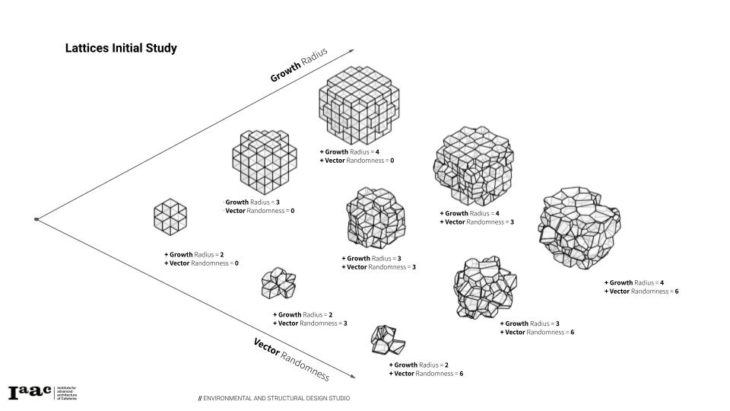
The script is also able to generate 3D structures that contain both grid cells and organic cells. And by connecting each box’s vertex to the centroid, another structural typology can be generated.
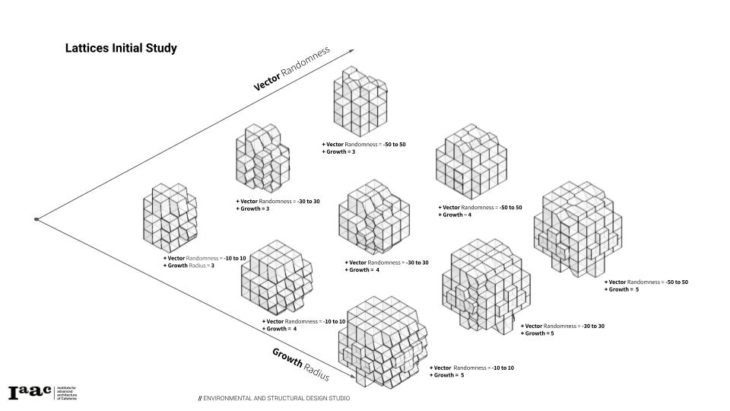
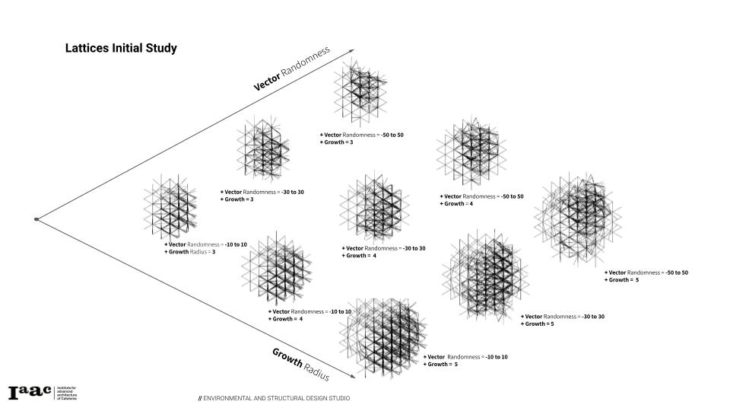

MASTERPLAN STRATEGY
The site has a potential to connect various important nodes and make the entire area more liveable. But the current dead land status makes the areas disconnected to each other. Initial urban grid strategy is applied for site development. But to encourage more organic growth, a growing cell pattern, which was explained in early lattice study, is implemented at the site. The idea is to decontaminate the site by re-contaminating the site with organic structures
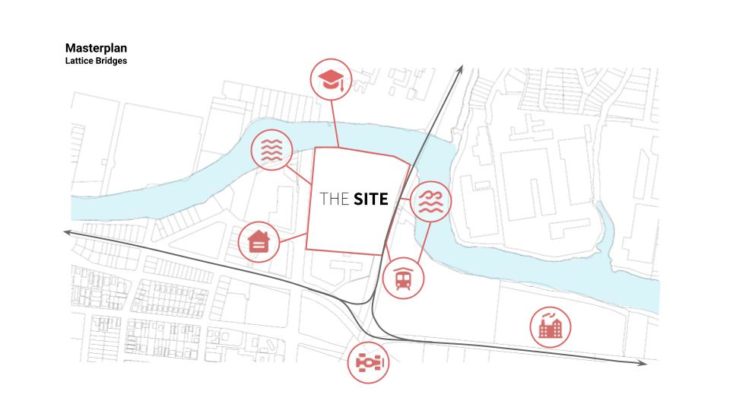
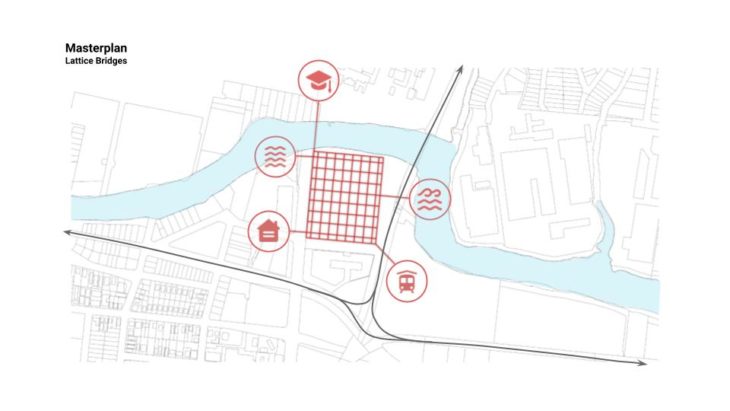
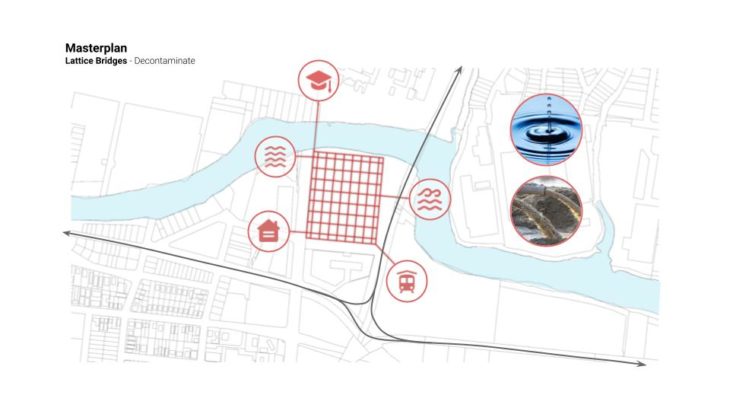
Few iterations can be generated by modifying the parameter of the masterplan pattern, which consist of grid sub division, number of attractor, vector length, and vector orientation randomness. After the masterplan pattern is generated, nodes can be connected using a short walk script. It can be seen that different patterns generate different paths.
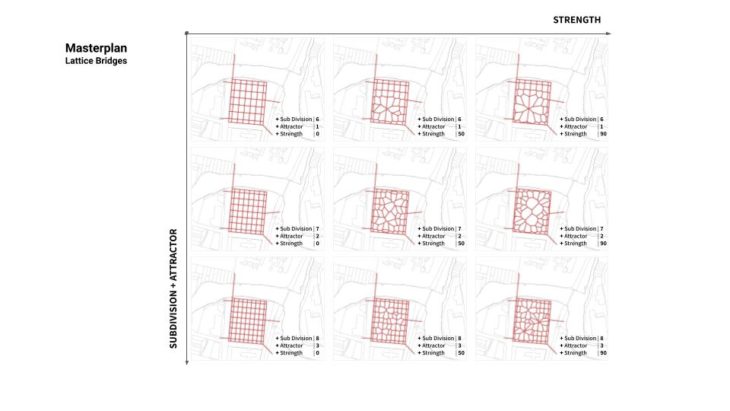
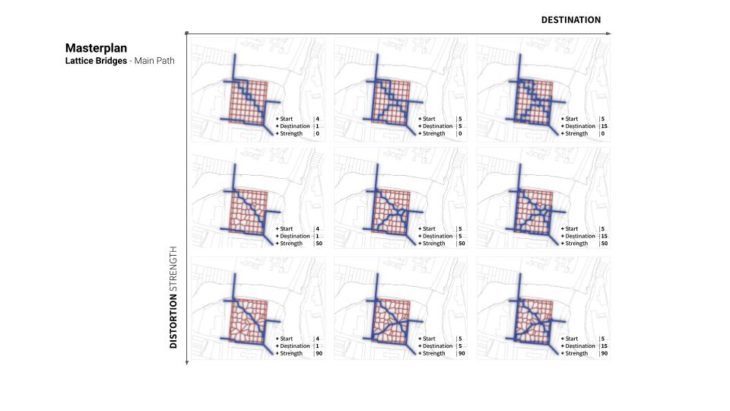
These paths can be developed into 3D lattice structures that are called “Bridges”, while the attractor of the masterplan pattern remains as green areas. These green areas can also be the locations for ecological structures that are called “Towers”.
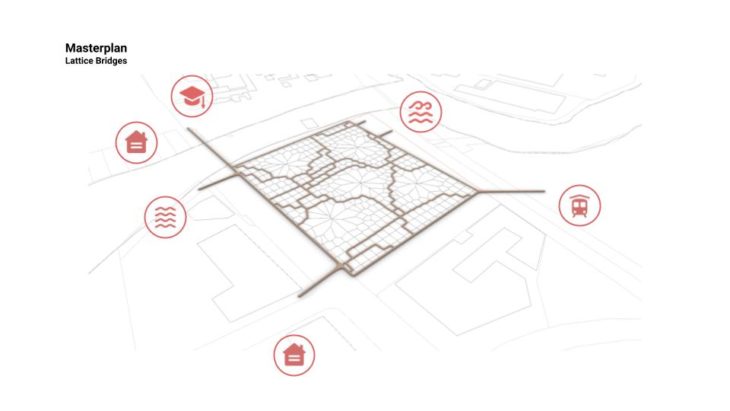
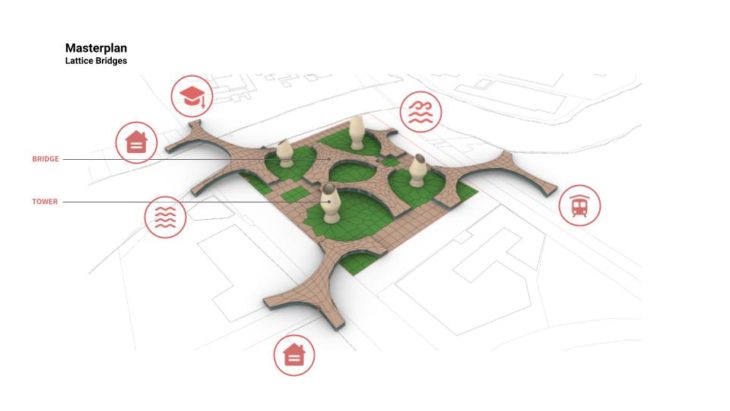

BRIDGES DESIGN
The lattice bridges are generated using 3D catenary form finding with the help of kangaroos. Upward force is applied to the 2D masterplan pattern, and a vault form with an organic grid can be generated. The vault is occupying the paths that are connecting nodes and supported by limited anchors on the ground, minimizing intervention in the land remediation process.
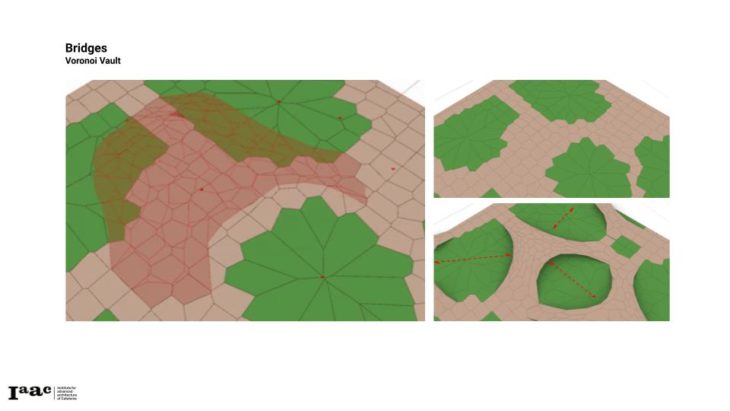
Influenced by initial lattice cell study, spatial quality and structural system of the organic grid can be optimized by introducing members that connect the vertex of the cells. Each option are analysed using karamba to test the feasibility of the structure.

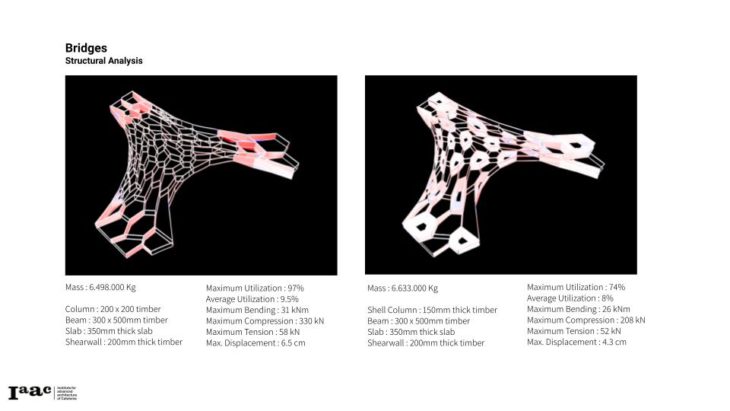
The final development of the cells include converting the concave shell structure into tree-like timber structure. This allows the structural cell to provide daylighting to the interior space, while at the same time providing spaces for trees to be planted. The trees can act as a natural sun shading device for the interior space.
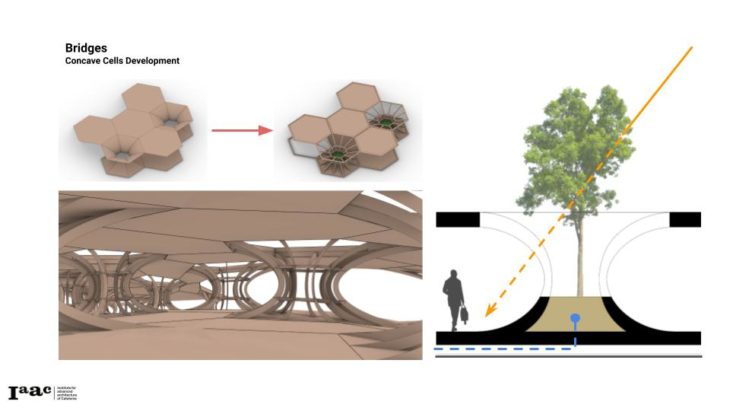
Finally, various programs, such as community center, library, commercial area, food hall, and gallery can be accommodated into the structure. This combination between civic and commercial functions are expected to transform the site into a more vibrant and liveable area. The structure can also accommodate various wildlife under and around the structure. This allows the users to cohabit the spaces with riverside wildlife. 
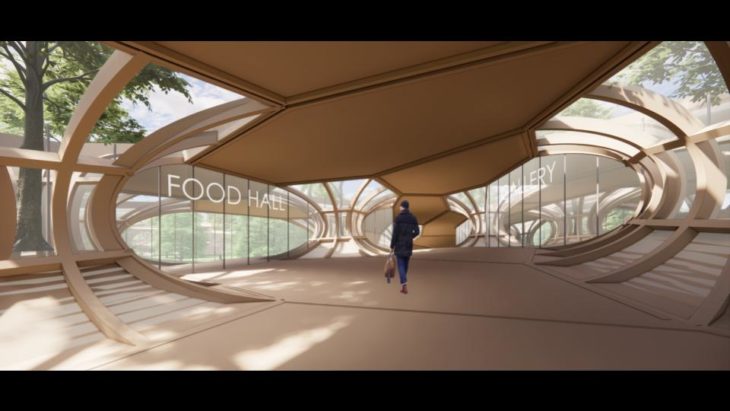
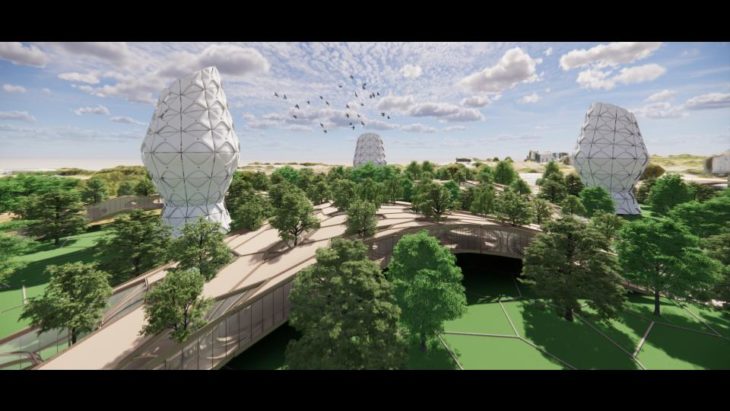
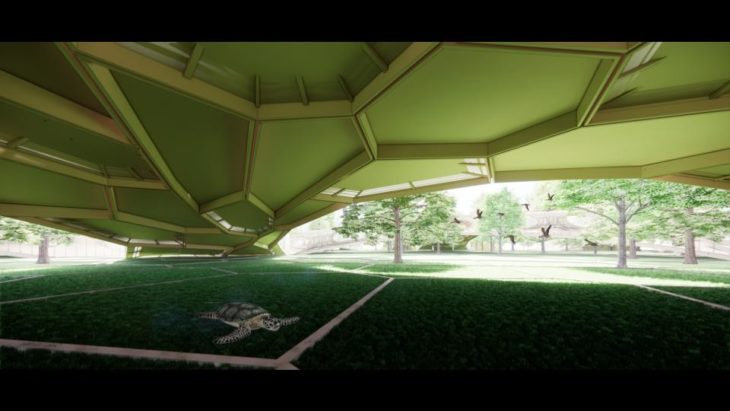

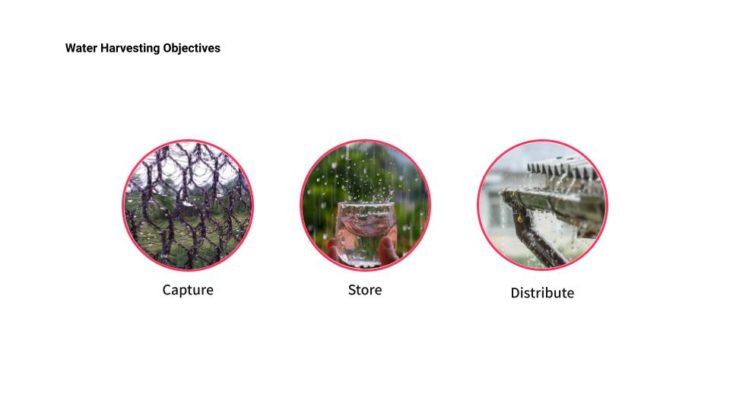
Namib Beetle
The shell of the Namib Beetle has a hydrophobic and hydrophilic sport surface in order to capture water from the current. In order for this beetle to
survive in the dry environment as the desert has developed a morphological and chemical strategy to capture water.
In the Namib desert, there is a fog that comes in, and when it does the beetle hydrophilic surfaces (shown as blue sports) cause friction allowing
the water to gather around this curve surface and eventually drop into the larger hydrophobic shell surface. This process happens in its back curved
shell which sits in an incline position to drive the water down into its headshell, acting as a distribution network.
Strategy
This morphological and chemical strategy to harvest water from the wind gives us an indication of the scale
and material dynamic which the design components should have to perform water collection. Given this dynamic, it can be established that a type of structure could be positioned where it faces or avoid the wind current of the desert site location.

Namib Beetle wind dynamic
The position and the form of the body have a direct correlation to how the insect capture the moisture from the wind in the desert. Its facing direction and inclination from its center allows it to control how the wind travels and interact with its exposed surfaces
Strategy
The application of this strategic position regarding the wind, allows us to bring aerodynamic principles as the Bernoulli principle. Which determines that given a certain share and rotation from its gravity angle the body in contact with the passing wind can affect its pressure and velocity.
The oval doubled curved surface helps the wind current passing from the top and the bottom, react differently to the friction with the shape. This process is high speed when lower pressure is applied to the surface and low velocity when the pressure is high.
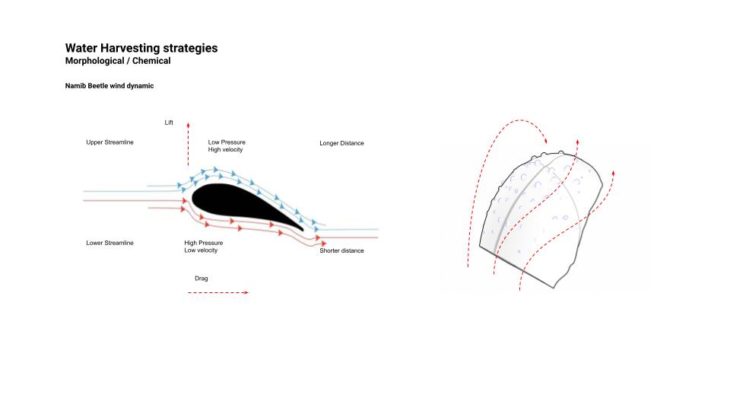
Horned Lizard
Scientists have unpicked how the skin of the Texas horned lizard funnels water towards its mouth – and copied the principles in a plastic version. This reptile can collect water from anywhere, including the sand it walks on; the fluid then travels to its mouth through channels
Special skin adaptations enable them to access water sources such as moist sand and dew: their skin is capable of collecting and transporting water directionally by means of a capillary system between the scales
Cell skin adaptations enable the lizard to access water sources such as moisture from the wind through its skin. It is capable of collecting and transporting water directionally by means of a capillary system below its skin cells. These cells also act as shading devices preventing the moisture to evaporate from inside of the body.
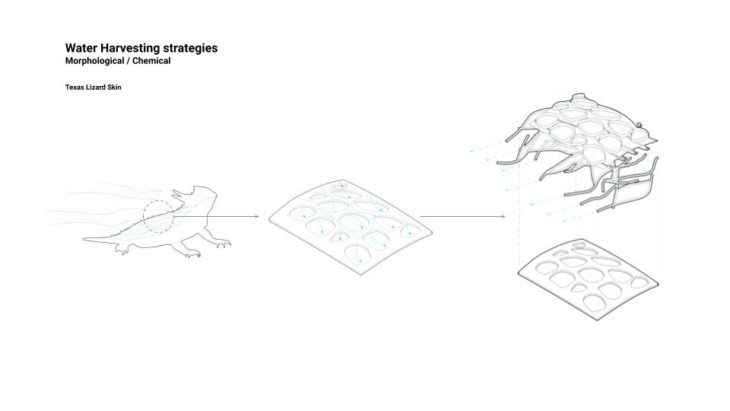
The shell of the Namib Beetle has a hydrophobic and hydrophilic pattern, showing that is possible for a form to perform an action not just by its form but by its Chemical components. The previously mention hexagon-related lattice could bring an initial condition for an offset pattern that can interact with each other in two levels. Creating low and rising sections which can act as channels.
Strategy
If the lattice cell is composed of a fine fabric-like structure, it could be possible to drive the water to an outlet exit, where it would be captured by the main structure pipe system and be stored at a lower level.
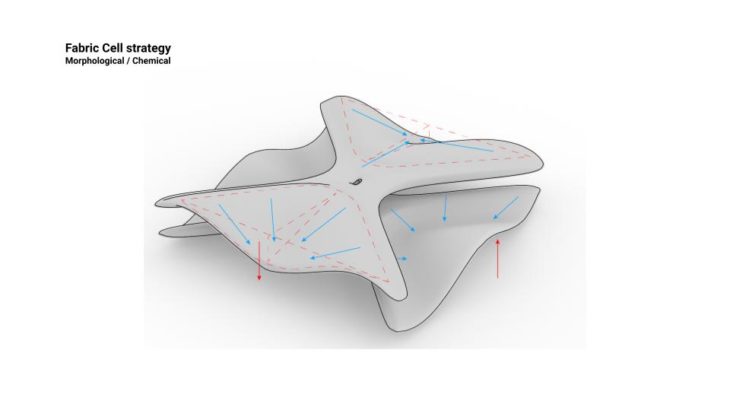

Lizard skin system
As an example of a system that catches water from the wind in a hostile environment the horned lizard skin, counts with a series of cells shaped like hexagons. In between these modules the water is able to penetrate and be transported through the body underneath the skin avoiding the external climate.
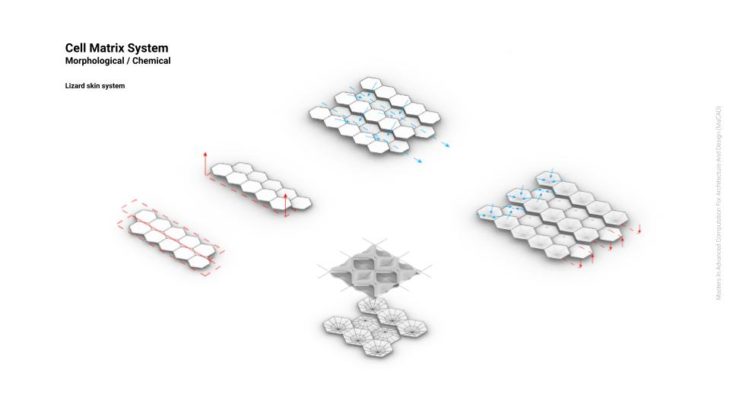
Given that the primary structure will be formed by reacting forces from the site chosen, it is only possible to establish that the system of soft lattices could form an array similar to the image. The multi-array pattern, informs the project that the skin will have a primary intention of capturing water from the wind taking the precedent systems analyzed.
Strategy
The inclination of the overall surface must play a role in activating the strategies of the lattice cells. The congregation of the lattices and their acquired chemical structure form should be able to capture water and transport it across the overall form. The unit cell should act differently to water depending on where it has been activated.
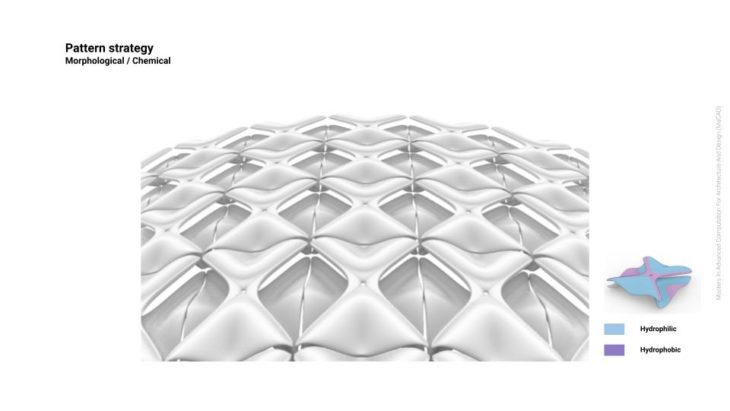
Directional, passive liquid transport
Fluid simulation estimating cell pattern and material friction The Cell pattern described previously should inform the skin of the project by it friction and reaction to water, establishing opportunities for variation in its porosity and spacing.
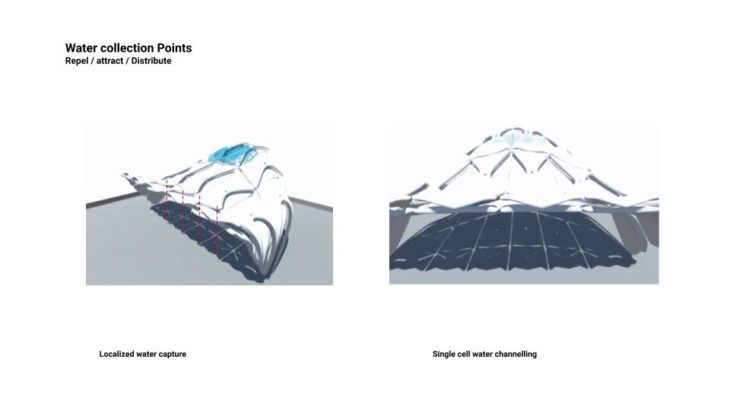
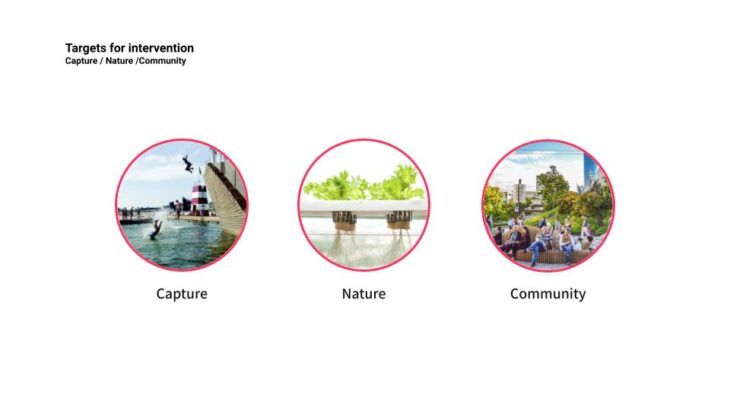
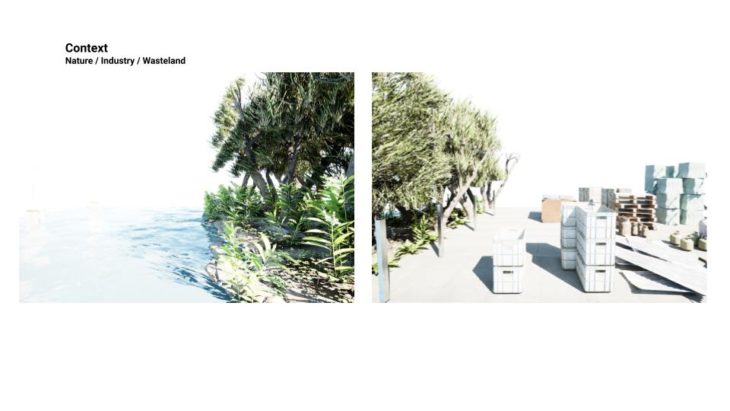
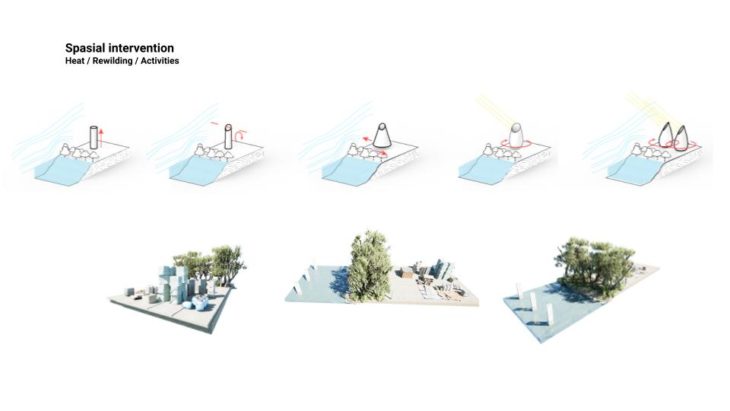
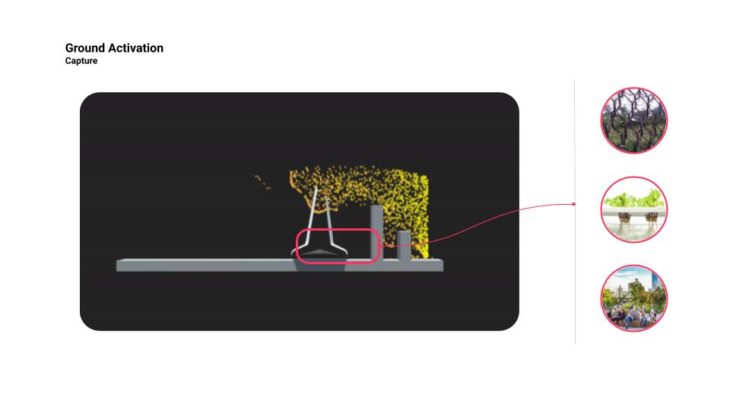
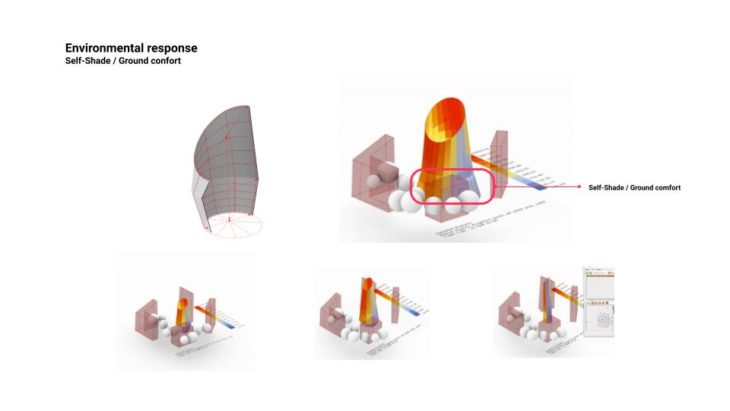
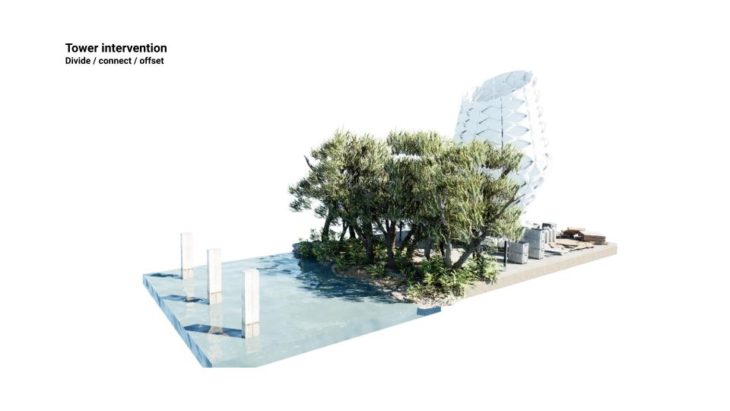
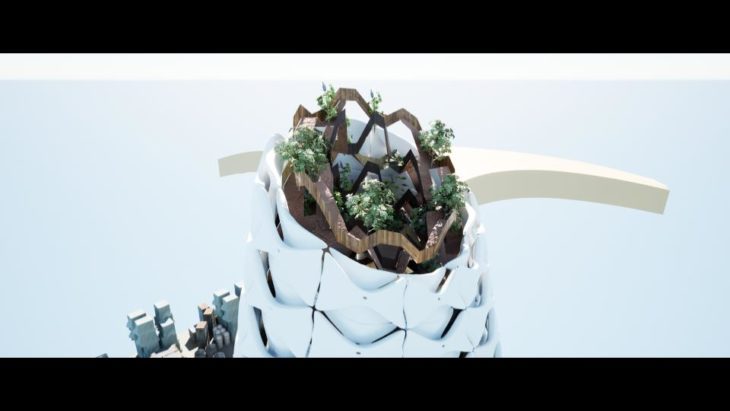
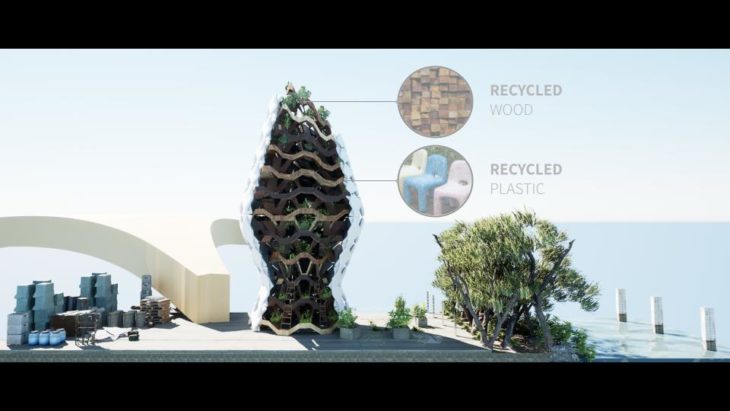
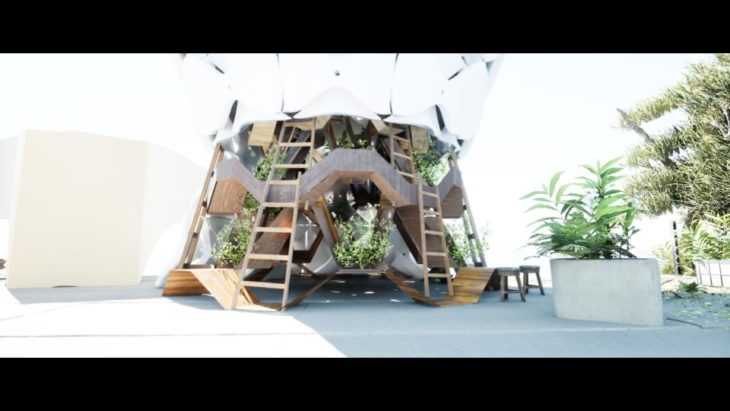
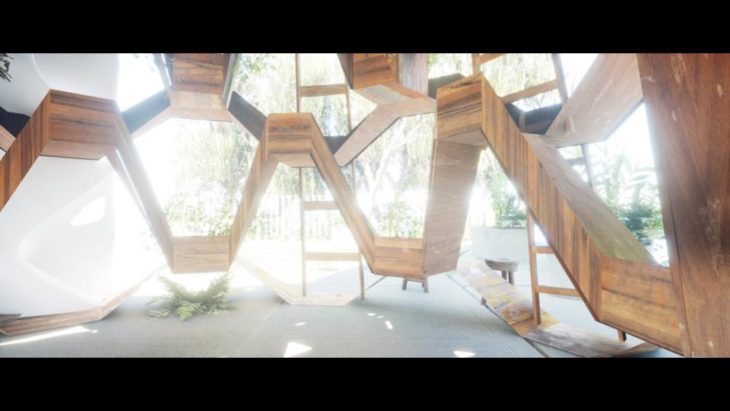
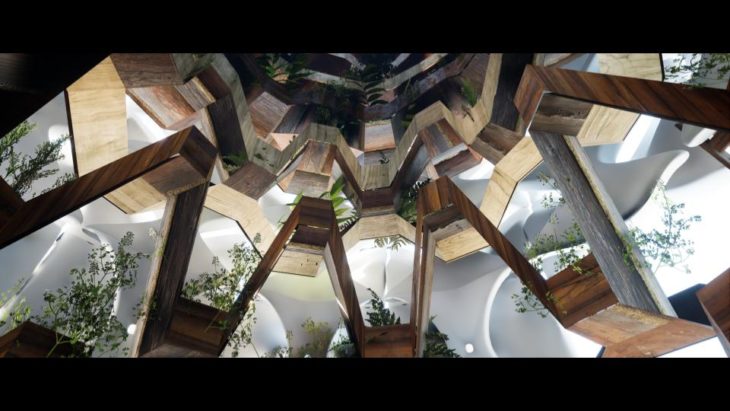
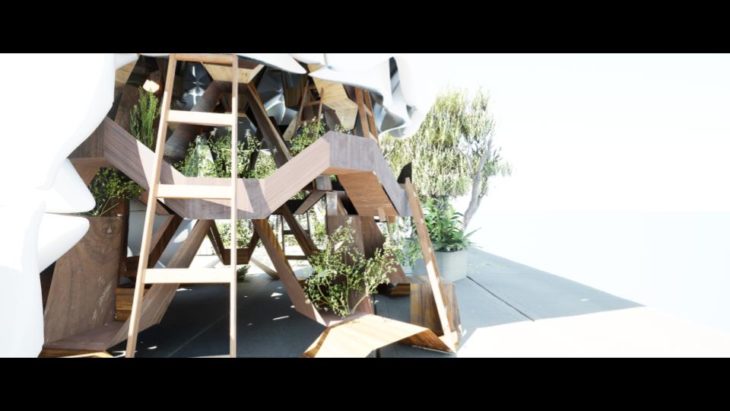
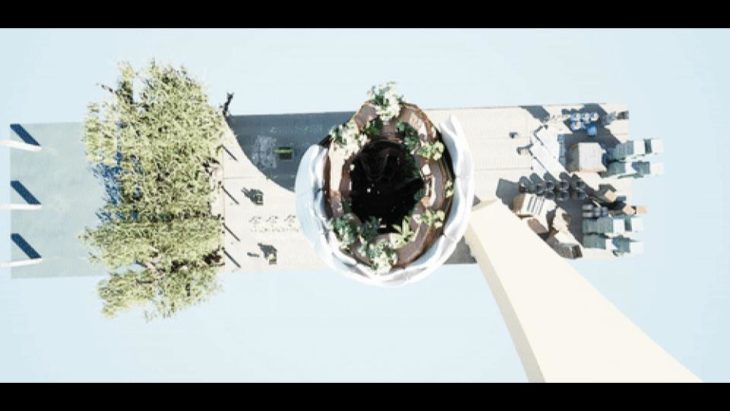

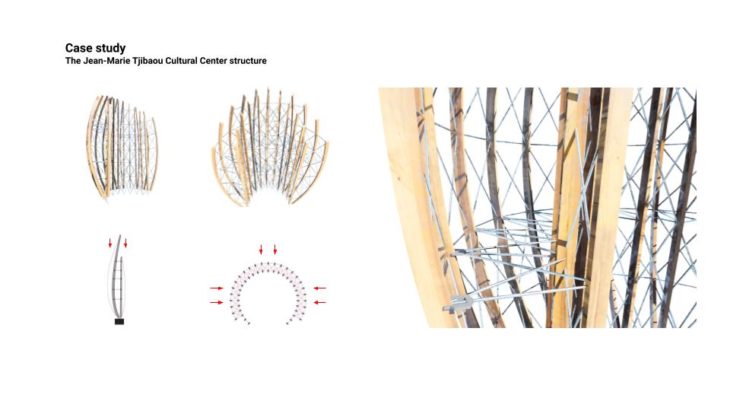
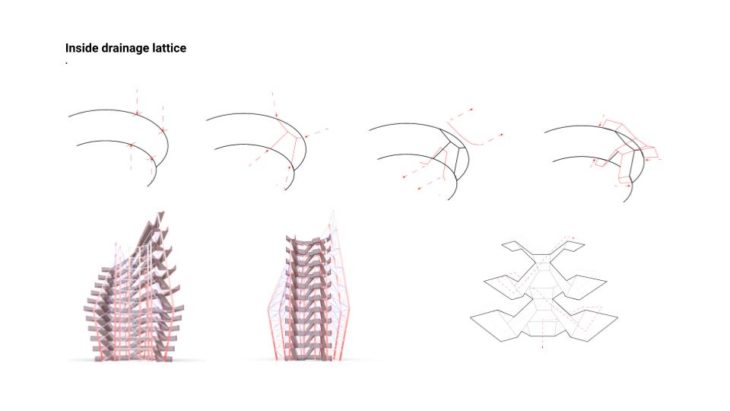
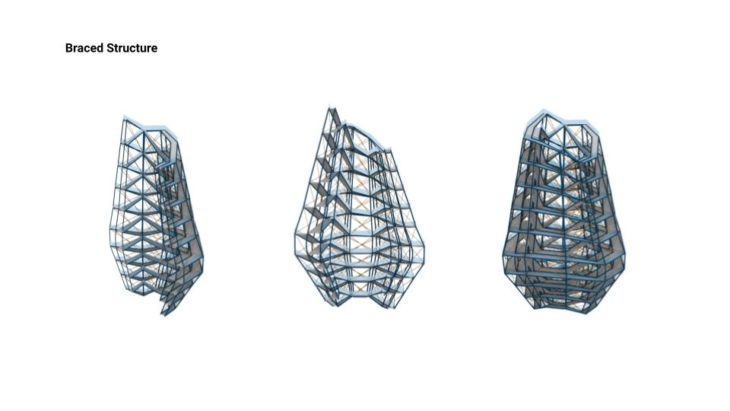
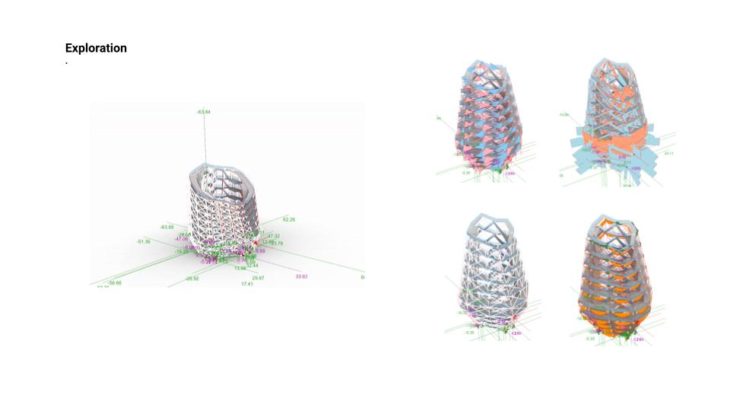
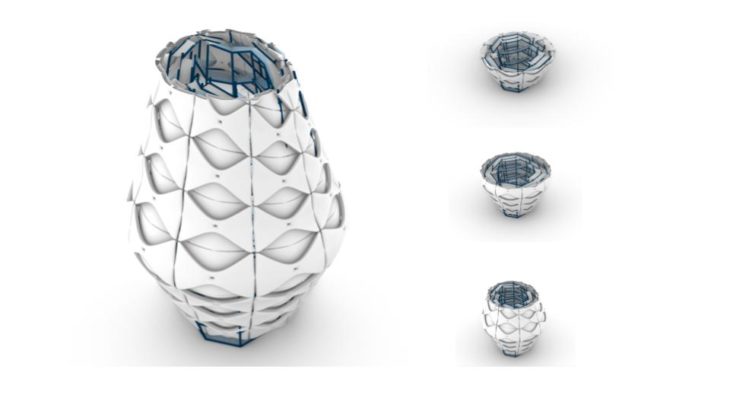
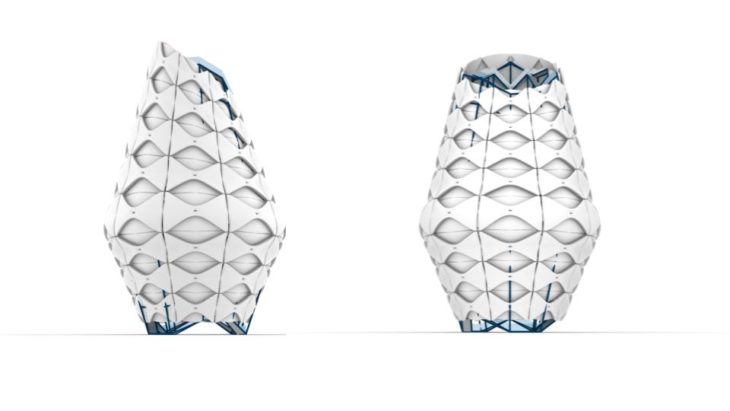
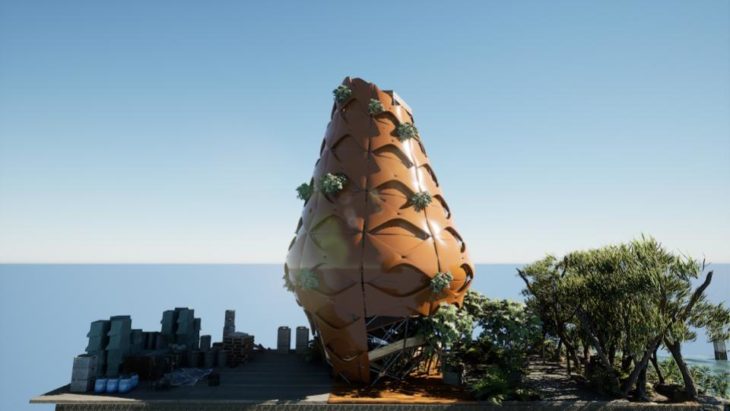
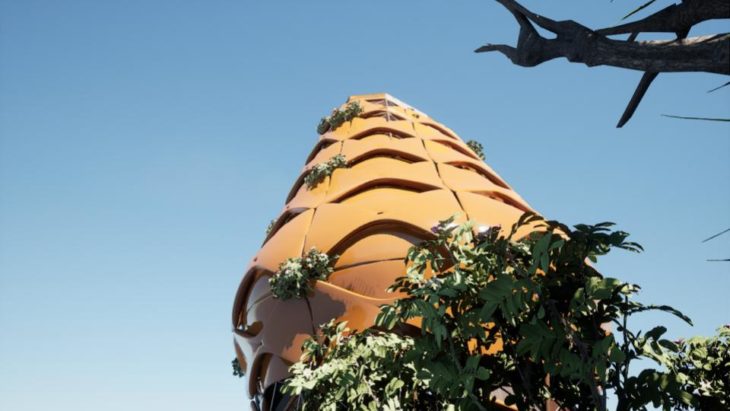
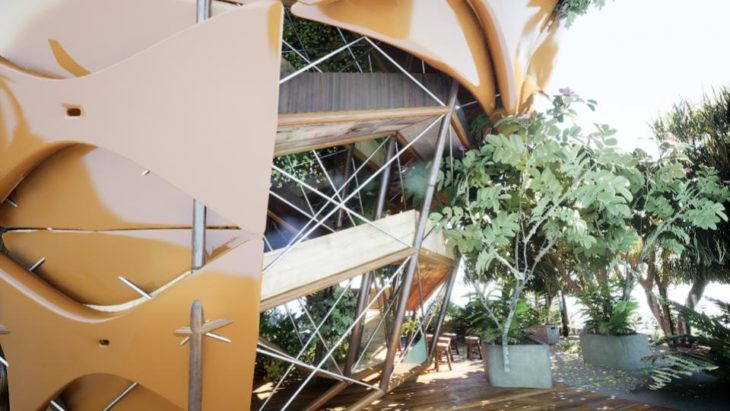

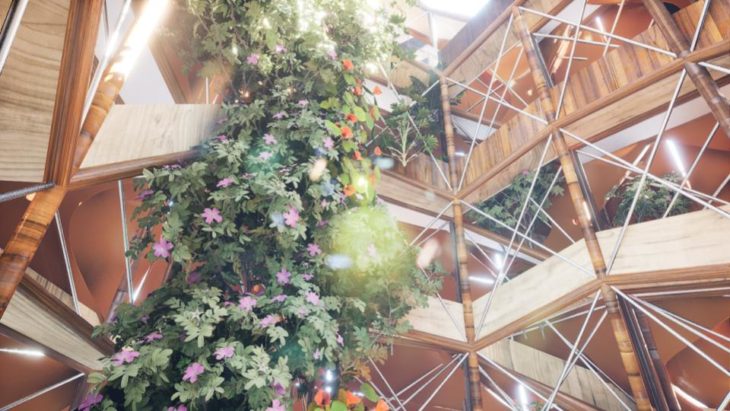


Credits
Restore and connect Western Sydney is a project of IAAC, Institute for Advanced Architecture of Catalonia developed at Master in Advanced Computation for Architecture and Design (MaCAD) in 2021/22 by students Danna Priyatna, Alexander Lopez, Basel Ghazaly, and Faculty Arthur Mamou-Mani, Fun Yuen, Krishna Bhat.
